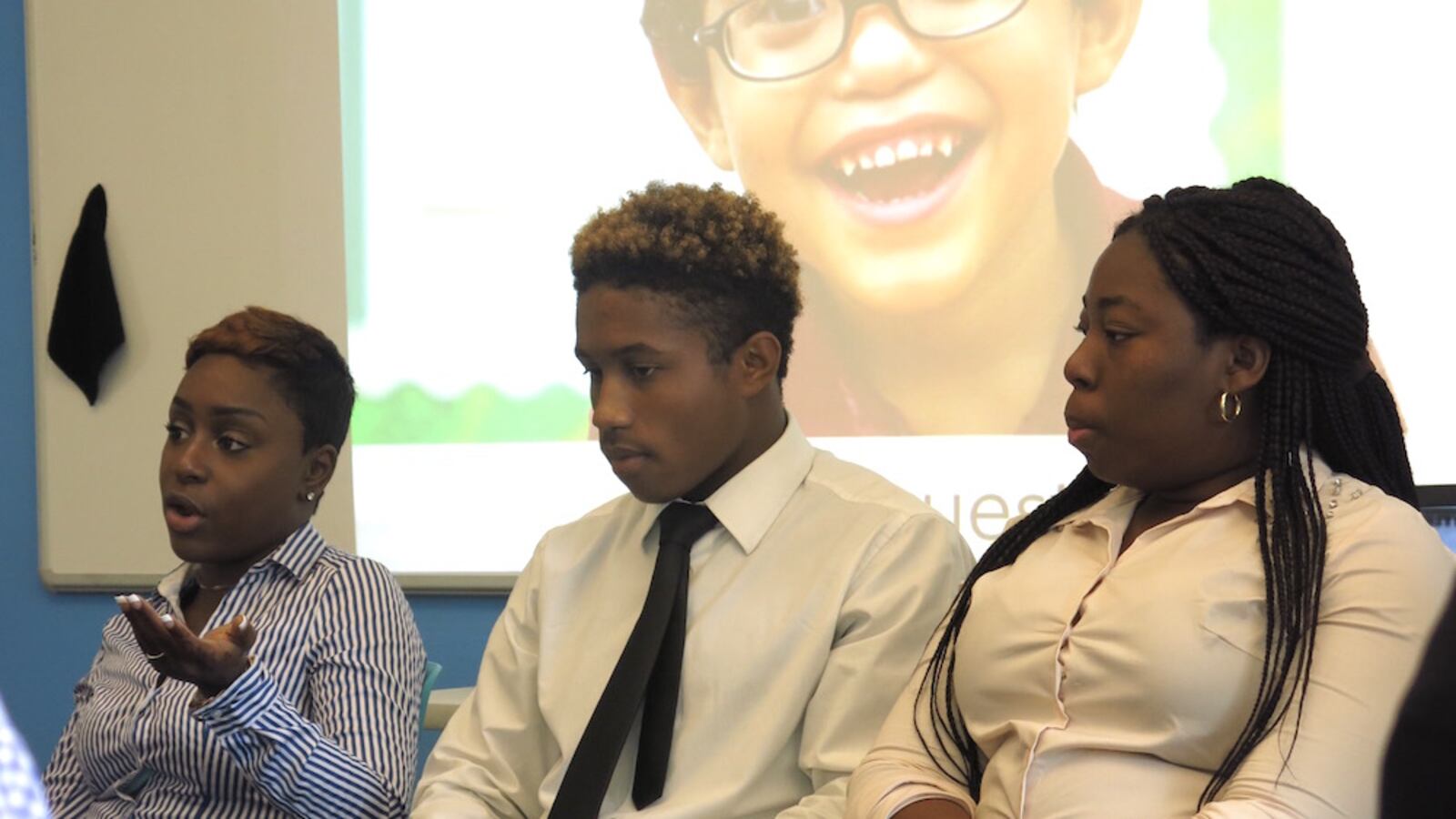Amy Christie has seen it many times. A student gets into a great college and heads to admitted students’ weekend, excited to explore their academic future.
Then they start examining financial aid packages — and the numbers just don’t add up.
“Realizing you can’t make that choice is really hard,” says Christie, the senior director of college access and success at the Achievement First charter network. “You’ve earned your spot and you just can’t go.”
The result: Instead of enrolling at that school, the student ends up somewhere less expensive and less selective. Researchers call the phenomenon of enrolling in a college that doesn’t line up with academic skills “undermatching,” and it’s more common among students from low-income families.
Achievement First, which operates 36 schools across three states, is about to try a new way of addressing the problem. The network’s Brooklyn board approved a plan last week to offer scholarships to students who opt to attend a more expensive school with a higher graduation rate for black and Hispanic students.
“We believe that fairly modest amounts of scholarship money (~$3,000-$7,500/year) could have a significant impact on the matriculation decisions that a subset of our scholars and families make,” the proposal says.
It’s the latest attempt by a charter network serving mostly students of color from low-income families to help their graduates make it all the way through college — something that the schools acknowledge is a challenge. One reason is the financial burden college can put on students and their families.
“What our counselors are saying is that sometimes it really is just a modest amount of money,” Achievement First CEO Dacia Toll told board members.
Here’s how the scholarship will work: To be eligible, a high school senior must be choosing among colleges, including one that is more expensive but has a substantially higher graduation rate among black and Hispanic students. Students would be selected based on their financial need, academic track record, and other qualities like motivation.
Roughly 20 students who graduate this year from one of its Brooklyn high schools would be eligible for an average scholarship of $5,000 each year of college. The charter’s board approved allocating $100,000 annually for the program, money that will come from general funds the network receives from the state of New York. If the program proves successful, Achievement First hopes to expand it, perhaps by raising philanthropic funds.
“I think it’s really interesting,” said Matt Chingos, the vice president of education data and policy at the Urban Institute who has studied undermatching. He said he hadn’t seen scholarship programs as specifically targeted as Achievement First’s.
“For an individual student, there’s nothing inherently wrong with going to a less selective college,” he said. “The reason folks are concerned about it — and the reason I think it’s a problem — is because it’s a pattern in the data we predominantly see from lower-income families.”
“That matters, because more selective colleges aren’t just fancier and give you a better sticker on your car. They come with more resources and have better graduation rates.”
There is evidence in a number of states — Michigan, Florida, and Wisconsin — that need-based scholarships increase the chances that low-income students will enter college and earn a degree.
There’s also research, consistent with Achievement First’s approach, suggesting students benefit from attending a more selective, better resourced school. “People are more likely to graduate from places where more people graduate,” Chingos said.
Two studies in New Mexico and Tennessee do offer a note of caution, though, suggesting that scholarships may not end up helping lower-achieving students complete college. But even in these studies, relatively high-achieving students do benefit.
This scholarship won’t directly help college students with unexpected costs or living expenses. A 2016 KIPP survey of its alumni found that 43 percent reported missing meals while in college for financial reasons. Achievement First also maintains an emergency fund of $67,000, according to a spokesperson, which between 12 and 24 alumni tap into annually. KIPP recently expanded a similar program it started in Washington D.C. in 2014, with four of its regions starting their own funds with about $40,000.
Christie hopes the extra funding could help reduce the anxiety of students who do opt for schools that might put financial strain on their families.
“When there has been a student who actually has chosen the more expensive institution for all the right reasons, and the family hunkers down and says, ‘OK, we’re really going to make this work,’ but it’s at a level of stress — there’s this sentiment of living semester by semester or just being kind of on edge a little bit because you know that bill is coming,” she said.


